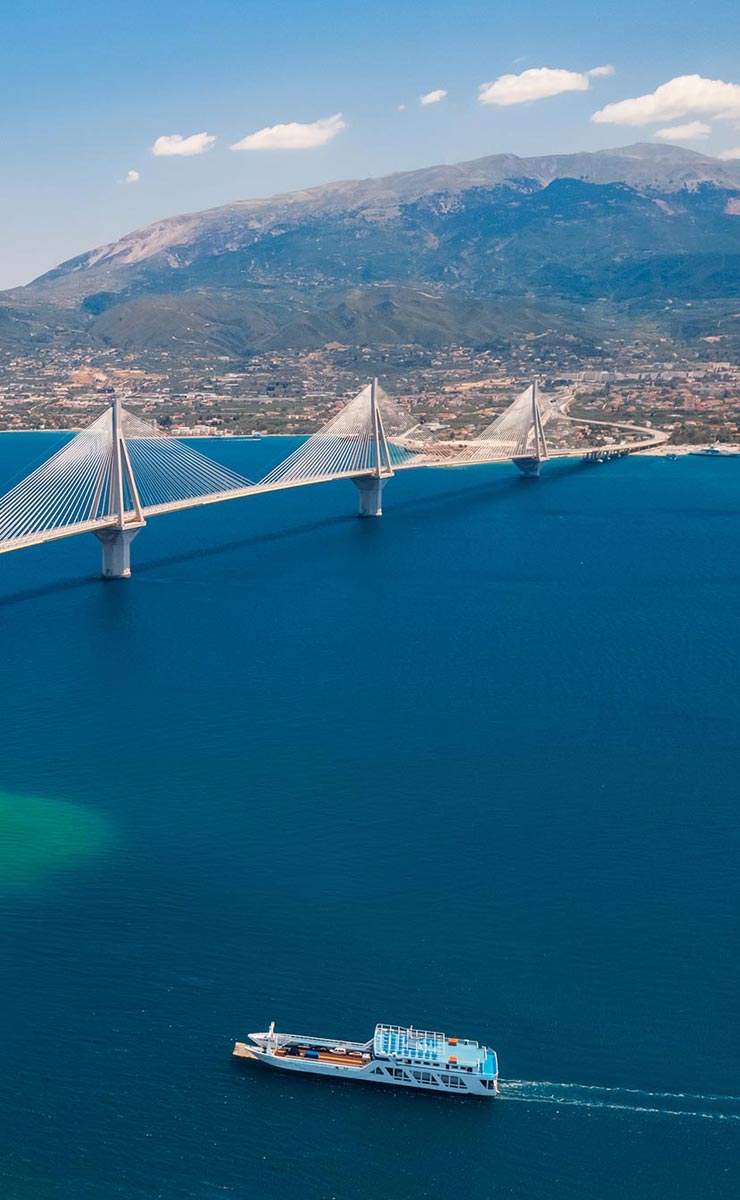Its name means "the island of Pelops-" although it was not officially an island until the Corinth Canal severed it from the mainland in 1881. Pelops was an ancestor of the family that eventually gave rise to the kings of Mycenae, most famous of which was Agamemnon. The region was also known as "Morea," a derivative of the name for mulberry leaf. This could describe the leaf-like appearance of this three-fingered peninsula, with a fourth finger, like a truncated thumb, on its east side. Or it could be because of the abundance of mulberry trees that were planted here after the Byzantines smuggled silk worms into Greece from China and began their own silk production.
Springtime in the Peloponnese is a feast for the senses: the hills are still green after the winter rains, the sky the same blue as the stripes on the Greek flag, the song of birds recently returned from their seasonal journey across the Mediterranean from Africa fills the ears, and the sweet scent of lemon and orange blossoms is a delight to the sense of smell.
"If you want to understand Greece, go to the Peloponnese," people say. And it's true. This is where King Agamemnon amassed his fleet to sail off to Troy, where Greece's best athletes gathered for the Olympic Games, where the Epidaurus Festival commemorating the best in Greek drama was held, where fierce Sparta forged an army that is still admired today, where the Byzantines built their strongholds at Monemvasia and Mystras, and where revolution against the 400-year occupation of Greece by the Ottoman Turks first broke out in 1821.
It is a land of snowy mountain peaks, of deep, lush valleys, of tall, spear-like cypress trees, of grape, olive, and citrus orchards, of beaches overlooking the deep-blue Mediterranean. The Peloponnese is the grandeur of triple-forted Nafplio, of the most acoustically perfect amphitheatre ever built at Epidaurus, of Ancient Argos and Mycenae, of the sweeping view from the top of the Acrocorinthos, and of ancient Corinth, mightiest city in Greece at the time St. Andrew visited in the 50's AD preaching the gospel of love and forgiveness of Jesus of Nazareth.
It is the most popular tourist destination on mainland Greece, and little wonder; the Peloponnese has the richest variety of archeological sites in the country, some of the best beaches, the most interesting holy sites and some of the most beautiful cities and villages. It has the engineering marvel of the Corinth Canal, hammered out of the living rock some 80 meters down, its steep walls and narrow blue channel providing some of the most dramatic photos of Greece. A more modern engineering marvel is the breathtakingly beautiful, award-winning Rio-Antirrio Bridge near Patras on the west side of the peninsula. It's the world's longest multi-span cable bridge, and a miracle of technology, built as it is over an active earthquake zone.
The Peloponnese as a destination is so rich, so interesting, and so full of variety, that to spend one's entire vacation here would be no mistake. And, coming away, a deeper understanding of Greece is sure to take place.
Best hotels in Peloponnese
Euphoria Retreat is the first Wellbeing Destination Spa in Greece. A luxurious, 5-star retreat, located within the UNESCO World Heritage site of Mystras
On a 500-acre wooded estate along a 2 km sandy beach facing the Ionian Islands, near ancient Olympia, where the Olympic Games were born
The widely known 100 Rizes Seaside Resort, a proud member of the Small Luxury Hotels of the World, consists of 4 luxury-designed buildings, extended in a typical area of Mani’s wild landscape.















